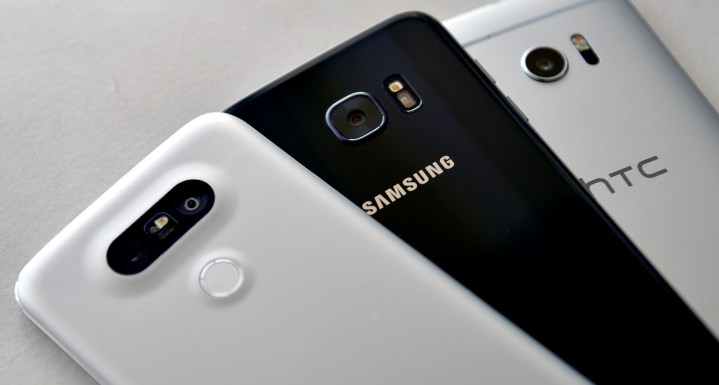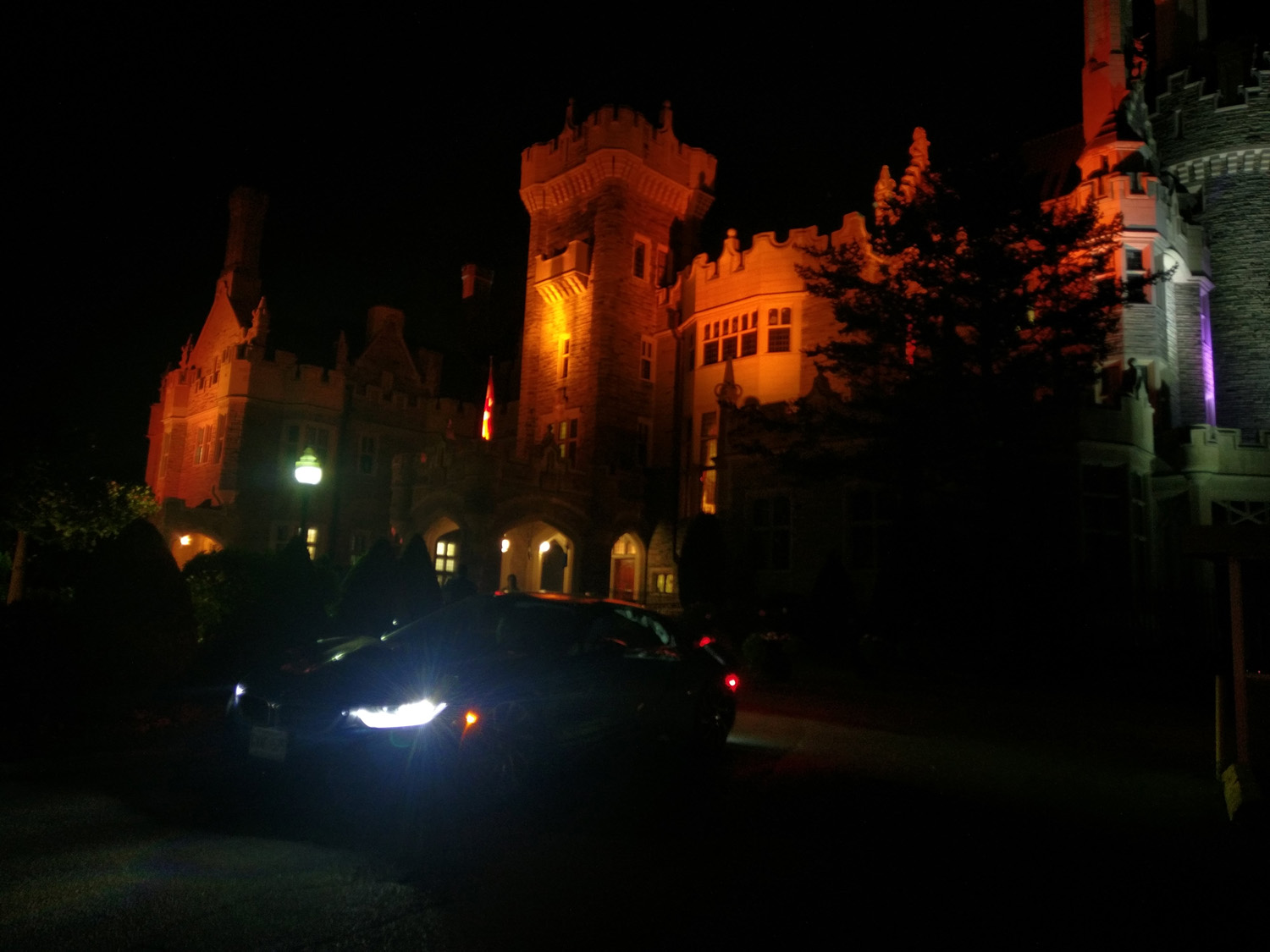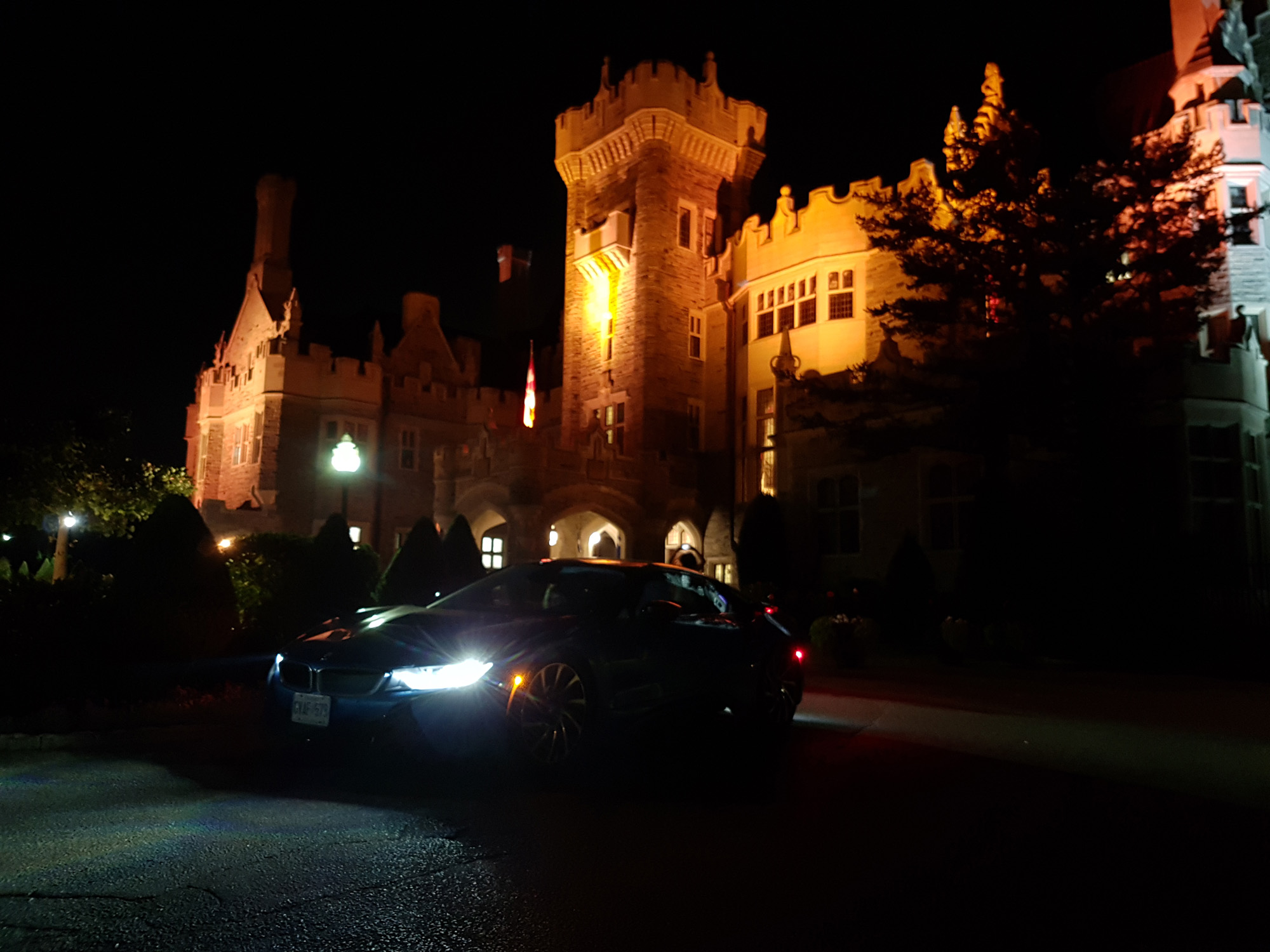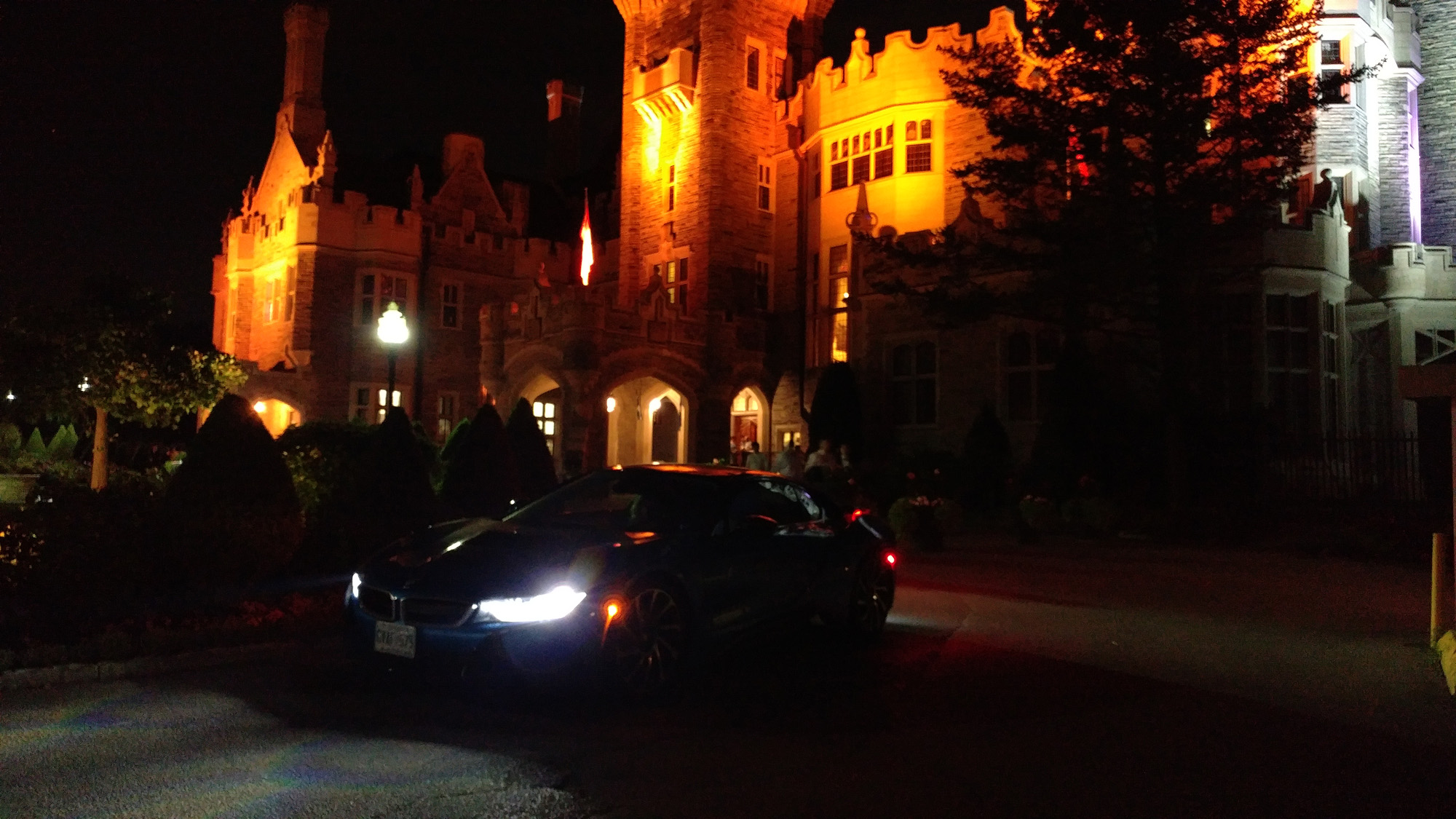
Processing power
There is an irony here in that each of these devices uses a different primary design. Curved glass is the calling card for the Galaxy S7 Edge, metal with a modular design for the G5, and the metal tradition continues for the HTC 10. None of these design treatments affect camera output in any particular way, though it is worth noting that the G5 does have a separately sold camera grip that fits with the device’s modular theme.
Despite dropping the overall megapixel count on the image sensor to 12 megapixels, the micron pixels are larger on the Galaxy S7 Edge, and the aperture is wider at f/1.7. These work together to bring in more light. Optical image stabilization (OIS) helps keep images from coming out blurry, while a fast startup time (0.7 seconds) and quick focusing round out an impressive shooter. It should be noted, however, that the regular “flat” Galaxy S7 has the exact same camera specs.
Coming off what was one of the best cameras on any phone in 2015 with the G4, LG aimed to push things further with the G5. It added rather than replaced, however, choosing to go with the same 16-megapixel image sensor in the rear, along with the same optical image stabilization, wide f/1.8 aperture, and color spectrum sensor next to the LED flash. The main differentiator is the inclusion of a second ultra wide-angle (135-degree) lens that users can shoot with separately or together with the regular 75-degree lens.
After HTC fumbled the camera with the One M9 last year, the company finally brought its groove back with a more competitive shooter this year in the 10. The UltraPixel 2 image sensor moves back to the rear, with 12-megapixels, a wide f/1.8 aperture, and OIS on board.
Even though all three have astonishing cameras on paper, the Galaxy S7 and S7 Edge win this one.
Winner: Samsung Galaxy S7/S7 Edge
Camera app interface
One understated facet of a good smartphone camera is how user-friendly the interface is. In that respect, there isn’t a huge difference between these three. The basics are easy to use, and it’s not hard to go from previewing an image and back again, nor is it difficult to adjust settings on the fly. They all offer a manual or “Pro” camera mode that puts control in your hands, too, meaning you can quickly adjust exposures, white balance, ISO, shutter speed, and focusing. Menus are clearly laid out, and you can even shoot in RAW if you like.
Winner: Tie
Which camera is best in Auto mode?
Shooting the same subjects, we leaned a little more on low-light and night shots because that’s how we could best ascertain each camera’s true capabilities. Of the three, Samsung is the only one that makes HDR (High Dynamic Range) automatic, letting it kick in whenever the sensor thinks it needs it. HTC and LG make it elective, like most other smartphones.
When shooting in Auto, as most users tend to do, the phone that benefits most is the Galaxy S7 Edge, with the G5 and HTC 10 only slightly behind. The reason is partly based on how the Galaxy S7 Edge automatically implements
LG G4 shooters will find little has changed on the G5, except that color saturation is different in Auto mode. Despite the same sensor, lens, and aperture, the software interpolates color balance slightly differently, desaturating in some images while producing good color in others.
The HTC 10 feels like a very different camera than its predecessors, so it doesn’t have the incremental experience that characterizes the other two. The One M9 faltered because it couldn’t produce consistently good images, especially in Auto mode and low-light scenarios. The 10 is a major improvement, outputting solid results in both cases. The muted colors of the previous model are significantly reduced, though not entirely gone. The saving grace is that those images invariably look better after being transferred to a computer.
This is perhaps the closest call between three Android flagships that we’ve seen thus far. Image quality is superb, and the consistency is easy to appreciate, particularly now that low-light shots are no longer terrible.
The Galaxy S7 Edge impressed us with its solid performance in auto, capturing excellent images and showing how a fast focus can pay real dividends when coupled with the main pieces that make up the camera. The G5 wasn’t quite as consistent shooting in auto, and neither mirrored the previous G4 or pushed past it. The HTC 10 benefits from totally different camera components that complement each other well enough to put the company back into
Winner: Samsung Galaxy S7/S7 Edge
Which camera is best in Manual or Pro modes?
For those who are unsure or feel underwhelmed by the auto settings, the true gems within each of these cameras lie in the respective manual modes. We have explored how to make the most of the manual or pro modes for the Galaxy S7 Edge, LG G5, and HTC 10, so we won’t rehash all the features here.
Last year, the G4 would have won this battle, but it’s a much tighter race this time around. All three are excellent in this case, but the G5 gains an edge with a superb combination of software and optics — including the second wide-angle lens — that manage to do better than the others.
The interface is a big reason why the G5 pulls ahead. It uses a slider system that not only makes it easier to understand what each feature is, but view the tangible difference in real-time. Again, the others do show real-time changes, too, except adjusting those settings is still easier with LG’s phone. Sliding the shutter up on a bright day or d0wn on a dark night illustrates what the resulting image would look like. Tinkering with ISO and white balance could also make a difference.
The same controls apply to both rear lenses, so the full breadth of the G5’s manual controls can be doubled up. Having a 135-degree lens, albeit at a lower resolution than the regular one, can be a major boon for shooting vistas or large buildings from a difficult angle.
The Galaxy S7 Edge sports great manual controls, with excellent results. It’s clearly the best Samsung has done thus far, though it doesn’t really deviate from last year’s interface. However, the wider f/1.7 aperture does help the S7 Edge’s Pro mode capture more light in darker settings.
Taking the castle night shot with the car in front as another example, which was captured with manual controls on all three. The Galaxy S7 Edge turns out to be the best photo of the bunch, with vibrant colors, sharp detail, and no real noise smothering the shadows. For their part, both the LG G5 and HTC 10 do a fine job, too.
Moving to the daytime, the church tower looks great with the sun shining on it as the blue sky and clouds hover above. This is an example of a photo that’s hard to mess up, simply because the lighting, angle, and colors are already ideal. The G5 slightly overdoes it with a magenta overtone, though that’s easily fixed with a quick edit. The HTC 10 seems to handle the image really well, with good color contrast and excellent shadows and highlights. The Galaxy S7 Edge also produces a stellar image.
These three cameras were very close in performance when shooting in manual mode. Where one may have shot better in one instance, one of the others may have done better elsewhere. In spite of that, the gap between them never seemed to be huge.
In the end, the Galaxy S7 Edge took the best shots in manual, though the LG G5 offered easier controls and a strong wide-angle lens.
Best Shot: Samsung Galaxy S7/S7 Edge
Best Software: LG G5
Which camera has the best special modes?

Gimmicky camera features are sometimes part and parcel of flagship handsets. In the past, Samsung was the worst offender. However, the company’s restraint over the last three years helped Samsung focus and improve on the modes that mattered most. That doesn’t mean there isn’t some fluff in the mix, but at least it’s much easier to focus on the modes that matter.
Still, it’s not all roses. Virtual Shot is still not good, and many of the features are specific to the video side. Selective Focus uses software trickery to create a sense of depth, blurring the background and keeping the foreground subject sharp. The Galaxy S5 first introduced this feature with decent results, but Samsung hasn’t improved the mode exponentially since then.
HTC removed the Bokeh mode in the 10, taking away the depth-of-field feature completely. Like Samsung, it used software-driven trickery, and LG hasn’t offered such a feature in its G series the last few years.
Indeed, LG didn’t add much beyond the additional wide-angle lens, though it did add Multi-View, a feature that shoots with both lenses and the front-facing camera to create three perspectives in one collage image. It’s hard to see too many instances where such a thing would be necessary, but there it is. Popout is a similar feature, except it only shoots with both rear lenses, and can then be adjusted with a vignette border or other stylistic treatment to make the image look interesting. It’s actually better than it sounds. The nine film filters are interesting enough to try shooting with because they hark back to bygone eras, rather than use more modern filters.
Ultimately, it’s the extra lens and hardware modularity that make the G5 a little more interesting, though only LG’s own Camera Grip stands out as a photography accessory. The Galaxy S7 Edge, on the other hand, has some third-party accessory support for other lenses.
Meanwhile, HTC smartly pared things down, offering few modes. Besides Auto, Pro, Panorama, and Zoe, there’s not much else to shoot with, which is a good thing.
Of course, all three phones can make use of the myriad of camera apps available on
Winner: LG G5 (mainly because of the extra lens)
Overall winner: Galaxy S7/S7 Edge
Summing this shootout up is easy because it’s a close call in each segment. The Galaxy S7 and S7 Edge are superb in both Auto and Pro modes, thanks to faster focusing, good color balance, and the speed in which it launches the camera with a double-press of the home button. Because of their flexibility, we’re naming Samsung the winner of this battle.
The G5 also makes a strong case with a top-class Manual mode, plus the fringe benefits of that extra wide-angle lens make it a strong performer. It could perform better in Auto, and the jury’s still out on whether the camera modularity may go anywhere, but otherwise, it is one of the best camera phones available.
HTC brought it this time with the 10, and its overall performance was excellent, leaping well ahead of its predecessor, the HTC One M9. It was nice to see the company get back on track, and its efforts pushed the other two competitors hard in this shootout. It may not have outright won any segments, but it never lost by any significant margin. It’s nearly as good as they are.
We strongly recommend learning the manual controls for any of these phones, especially when shooting something important. Chances are, you will end up with a much better result than you would in auto mode.
Editors' Recommendations
- Samsung Galaxy Tab S8 vs. Samsung Galaxy Tab S7
- Samsung Galaxy S10 Series to get One UI 4 Beta for Android 12
- The Samsung Galaxy Tab S7 FE 5G gets a U.S launch. Can it compete with the iPad?
- Samsung Galaxy A71 5G vs. OnePlus Nord: Midrange phone battle
- Samsung Galaxy Note 10 Plus 5G vs. Galaxy S10 5G














